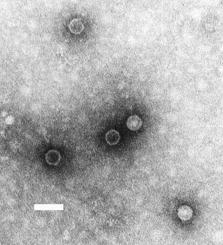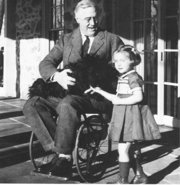Since 1988, the estimated number of wild poliovirus (WPV) cases worldwide has decreased >99%, and three World Health Organization (WHO) regions (Americas, European, and Western Pacific) are now certified as polio-free. Substantial progress has been made in the Eastern Mediterranean Region, where 18 of the 22 countries are polio-free and polio remains endemic in only three countries (Afghanistan, Egypt, and Pakistan). This report summarizes progress towards polio eradication in Egypt from 2003 through mid-2004 and describes the measures needed to ensure successful interruption of poliovirus transmission.
Routine Vaccination
Since 1994, reported routine vaccination coverage of infants (aged <12 months) with >3 doses of oral poliovirus vaccine (OPV) has remained >90% in Egypt. During 2003, reported routine coverage of infants with >4 doses of OPV was >95%. Coverage with >4 doses of OPV was >95% in 234 (94%) of 250 districts and was 90%-95% in the remaining 16 districts.
Supplementary Immunization Activities (SIAs)
In 2003, Egypt conducted four rounds of National Immunization Days (NIDs) * and three rounds of Subnational Immunization Days (SNIDs) ([dagger]). As of June 2004, Egypt has conducted two rounds of NIDs and one round of SNIDs. In addition, two mop-up rounds ([section]) were conducted in June and July in response to a confirmed polio case in May. SNIDs implemented in 2003 and 2004 targeted mainly Greater Cairo ([paragraph]) and governorates in Upper Egypt that were the focus of WPV circulation in 2003 and 2004. All SIAs in 2003 and 2004 were conducted by using an intensified house-to-house approach. Further improvements in SIA quality were introduced in 2004, including revised tally sheets, supervisory guidelines and checklists, and training materials. The increasingly high quality of these SIA rounds was documented by international observers and independent monitor surveys (Ministry of Health and Population [EMOHP], unpublished data, 2004). Administrative data indicate that the number of children vaccinated during NIDs increased by approximately 15%, from 9.8 million in the December 2002 round to 11.3 million in the April 2004 round.
WPV Surveillance
Surveillance for acute flaccid paralysis (AFP) cases in Egypt improved substantially in 2003 and 2004 (Table) in response to recommendations from the Egypt Technical Advisory Group (TAG) made in March 2002, which included strengthening central level supervision and data management and increased awareness of reporting. Nationwide, the nonpolio AFP rate per 100,000 children aged < 15 years reached 2.5 in 2003 and increased to 3.3 in 2004 (annualized as of June 2004). In 2004, a total of 23 governorates achieved a nonpolio AFP rate of>2.0 cases per 100,000 children aged <15 years, compared with 21 governorates in 2003. The four governorates with rates below 2.0 in 2003 had low population density. Adequate stool specimens were collected within 14 days of paralysis onset from 93% and 94% of persons with AFP nationwide in 2003 and 2004, respectively, with all governorates achieving >80% in both years.
Environmental surveillance (i.e., collecting and testing wastewater samples for the presence of WPV) in Egypt began in September 2000 as a supplement to AFP surveillance. In 2001, this network encompassed 11 sites in eight governorates and expanded to 33 sites in 18 governorates by June 2004.
WPV Incidence
WPV type 2 (P2) was last detected in Egypt in 1979, and type 3 (P3) was last detected in December 2000. Incidence of WPV type 1 (P1) decreased from seven cases in 2002 (six from Lower Egypt and Greater Cairo and one from Upper Egypt) to one in 2003, reported in June from Abu Korkas District, Menia Governorate (Upper Egypt). WPV was isolated from a contact of an AFP patient in the same district in October 2003. In May 2004, one case was identified from Dairut District, Assiut Governorate (Upper Egypt, bordering Menia Governorate) (Figure). WPV also was isolated from two of the close contacts of this patient. All AFP patients and positive contacts in 2003 and 2004 had received >10 valid doses of OPV before paralysis onset. All isolates from patients and contacts in 2004 were P1.
In 2001, a total of 75 P1 isolates were detected from environmental surveillance in eight governorates (seven in Upper Egypt and one in Lower Egypt). In 2003, a total of 12 P1 isolates were identified from five governorates: three from Cairo and one from Giza, two from Sharkia (Lower Egypt), and five from Menia and one from Qena (Upper Egypt). As of June 2004, three P1 isolates had been identified from two neighboring governorates in Upper Egypt (Assiut and Menia).
Genetic sequence analyses have been performed routinely on all WPV isolates obtained in Egypt since 1996. Results indicate a substantial decline in the number of Pl clusters, from 12 in 2001 to one in 2004. All isolates in 2004 have been from a single cluster of closely related lineages. However, the P1 isolated from the polio patient in May 2004 had > 1.0% nucleotide sequence difference from ally other isolate and represents an "orphan" lineage that surveillance failed to detect during the preceding year.
Editorial Note: Ongoing improvements in the quality and frequency of polio-eradication activities, especially the intensified SIA rounds beginning in late 2002, resulted in a reduction in the geographic distribution and genetic diversity of P1 circulation in Egypt during 2003 and 2004. Focusing efforts on Cairo, Giza, and governorates in Upper Egypt with documented P1 transmission in 2003 and 2004 contributed to reducing transmission. The Intersectoral SIA Task Force, which was established by EMOHP and includes WHO and United Nations Children Fund (UNICEF), was instrumental in identifying and addressing problems at district and subdistrict levels and in setting strategic directions for the program such as performance of the vaccination and supervision, training, and selection of vaccination teams. A Task Force plan for response to WPV isolation was developed in 2004 and implemented after detection of the polio case in May.
Substantial improvement in AFP surveillance performance during the previous 2 years is evident based on the recommended surveillance indicators. However, the finding of an orphan lineage of P1 from the WPV case in May 2004 suggests potential gaps in AFP surveillance. Environmental surveillance, an adjunct to AFP surveillance, has been a useful source of information on poliovirus circulation. However, because the isolation rates of nonpolio enterovirus (NPEV) and Sabin virus from environmental samples demonstrated unexplained gradual decreases since late 2003, recent environmental surveillance data should be considered with caution. In June 2004, with the help of national and international experts, a systematic evaluation of possible deficiencies in sample processing was conducted. The technical problem, related to reagents used for concentration of samples, appears to be resolved, and environmental sampling is again yielding important surveillance information. Regaining the sensitivity and reliability observed in the past will be important to clarify progress and plan future activities to eradicate polio.
Available evidence suggests that Egypt is now closer than ever to achieving interruption of WPV transmission. However, given the high population density, frequent population movement throughout the country, and suboptimal sanitation, ongoing Pl circulation in Upper Egypt demonstrates the need for further increasing the frequency of nationwide rounds and sustaining very high OPV coverage to definitively interrupt transmission. In addition, the strong commitment and support of EMOHP and its partners to the eradication goal is critical and will need to be maintained to interrupt transmission.
* Mass campaigns conducted during a short period (days) in which 2 doses of OPV are administered in two rounds 4 6 weeks apart to all children in the target group (usually those aged <5 years) regardless of previous vaccination history.
([dagger]) Campaigns similar to NIDs but confined to part of the country.
([section]) Intensive house-m-house vaccination with OPV in districts with populations at high risk, conducted in two rounds, 4-6 weeks apart.
([paragraph] Greater Cairo: Cairo, Giza, and Kalioubia Governorates. Upper Egypt: governorates located on the River Nile south of Giza and Cairo, from Fayoum to Aswan. Lower Egypt governorates located north of Cairo and Giza, including Suez Governorate and excluding Matrouh, and North and South Sinai Governorates.
Reported by: Country Office of the World Health Organization; Regional Office for the Eastern Mediterranean Region, World Health Organization; Egyptian Organization for Biological and Vaccine Production (VACSERA), Cairo; Egypt Ministry of Health and Population. Enterovirus Laboratory, National Public Health Institute (KTL), Helsinki, Finland. Dept of Vaccines and Biologicals, World Health Organization, Geneva, Switzerland Div of Viral and Rickettsial Diseases, National Center for Infectious Diseases: Global Immunization Div, National Immunization Program, CDC
COPYRIGHT 2004 U.S. Government Printing Office
COPYRIGHT 2004 Gale Group




